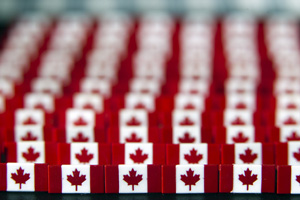
Lower gasoline prices continued to weigh against a rise in the cost of food in October as the annual pace of inflation held steady at 1.0%.
However, economists cautioned that inflation will start making a return in the coming months as we pass the point when gas prices headed lower last year.
“We are going to start to see that ease up in terms of the downward pressure on that inflation rate,” Royal Bank assistant chief economist Dawn Desjardins said of the impact of lower gasoline prices.
She estimates the annual pace inflation to be around 1.5% in the fourth quarter.
Statistics Canada said Friday the 1.0% increase in the consumer price index matched the increase for September.
The Bank of Canada’s core index, which excludes some of the most volatile components, was up 2.1% from a year ago, matching the increase in September.
Economists had expected an overall increase of 1.0% in the consumer price index and 2.0% for the core index, according to Thomson Reuters.
However, even with core inflation over two per cent and the potential for the overall measure of prices to increase, CIBC economist Nick Exarhos said he expects the Bank of Canada will be focused on the path of the economy in determining the course of monetary policy.
“And on that front concerns remain, with renewed weakness in commodity prices posing fresh challenges for the Western Canadian outlook,” Exarhos said in a note to clients.
The Bank of Canada, which uses a target range of between one and three per cent for inflation, has said underlying inflation is below two per cent after the effects of a weak loonie are excluded.
Statistics Canada said prices were up in seven of the eight major components measured on a year-over-year basis, led by higher food costs.
Food prices were up 4.1% compared with a year ago, boosted by the cost of food bought in stores, which increased 4.6% compared with last year.
The cost of fresh fruit was up 13% compared with a year ago, while fresh vegetables increased 13.9% and meat gained 5.0%.
Offsetting the increase was the transportation index, which fell 3.2% compared with a year ago due to a drop in the price of gasoline. The gasoline index was down 17.1% compared with a year ago.
Overall prices rose in nine provinces compared with a year ago, with Manitoba posting the largest increase with a gain of 1.9%. Saskatchewan and Alberta followed as they both posted a 1.4% increase.
The consumer price index in Prince Edward Island posted its 11th consecutive year-over-year decline. The province saw a drop of 0.8% compared with a year ago.
The latest read on inflation came as Statistics Canada also reported that retail sales fell 0.5% in September to $43.3 billion.
Sales were down in eight of 11 subsectors as retail sales in volume terms edged up 0.1%.